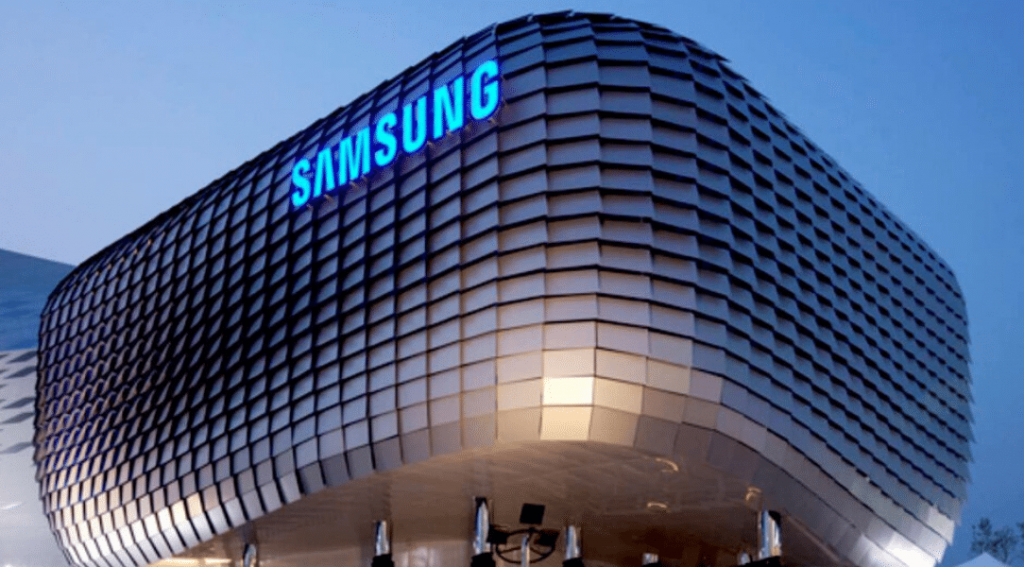Samsung reports report Q3
October 27, 2022

Samsung Electronics has reported financial results for the third quarter ended September 30t 2022.
Total consolidated revenue was a record for the third-quarter at KRW 76.78 trillion (€0.05tn) despite a challenging business environment, while operating profit declined 23 per cent from the previous quarter to KRW 10.85 trillion. With record revenue in each of the respective quarters so far this year, the Company expects annual revenue to surpass the historical high set in 2021.
Earnings in the Memory Business declined as inventory adjustments of customers exceeded market expectations and demand for consumer products remained weak. The System LSI Business saw lower profits due to weak demand for mobile phones and TVs, while the Foundry Business posted a record quarterly revenue on improving yields in advanced nodes.
SDC (Samsung Display Corporation) saw record revenue for the mobile panel business as demand increased following the release of new flagship smartphones, including foldables, while the large panel business continued to post losses amid weak TV and monitor markets.
The MX (Mobile eXperience) Business posted solid profitability, driven by sales of flagship products, including foldables, as well as new wearables. The Networks Business saw an improvement in earnings, led by overseas businesses, including securing a deal with Comcast.
The Visual Display Business expanded sales of premium products, but earnings declined due to weak demand and increased costs. The Digital Appliances Business, despite enhanced product mix, saw continued challenges due to higher materials and logistics costs amid sluggish demand.
The strength in the US dollar against the Korean won benefited the Company’s component businesses, resulting in an approximately 1 trillion won company-wide gain in operating profit compared to the previous quarter.
In the fourth quarter, while the Memory Business expects there to be fundamental server demand based on core infrastructure investments, inventory adjustments are likely to continue. The Company plans to actively address demand for high-density products and maintain priority on DRAM profitability. For the System LSI Business, new products from mobile customers are expected to drive growth in SoC revenue while in the Foundry Business, earnings momentum is expected to continue on solid demand from global customers and additional yield improvements.
SDC expects to maintain earnings growth in the mobile panel business, driven by strong demand for premium OLED panels for smartphones. The large panel business will expand the quantum-dot (QD)-OLED presence, increasing its customer base.
The MX Business will continue to sustain strong sales of premium smartphones and expand sales of tablets and wearables. The Company plans to focus on profitability amid ongoing macroeconomic uncertainties. For the Networks Business, the Company plans to expand overseas businesses, including in North America and Japan.
In the Visual Display Business, the Company says it will prioritise capturing demand in the premium segment and enhancing profitability through cost efficiency. The Digital Appliances Business will aim to increase revenue with higher sales in the premium segment and online channels during the year-end seasonality.
In 2023, demand is expected to recover to some extent, but macroeconomic uncertainties are likely to persist. The DS (Device Solutions) Division plans to actively address demand for high-density products and expand contributions from advanced nodes and adoption of new applications. The DX (Device eXperience) Division will continue to strengthen the leadership in premium segments and enhance the multi-device connectivity experience across mobile, TVs and home appliances.
In the Memory Business, after a dampened first half, demand is expected to rebound centring on servers as data centre installations resume. The Company plans to align its supply strategy with the mid-term market outlook, taking into account the limited overall production in the industry. With the reorganisation of the SoC business, the System LSI Business will further enhance competitiveness, and the Foundry Business is expected to reinforce advanced node technology leadership and win new orders in HPC and automotive segments.
For SDC, the Company plans to continue focusing on premium smartphones and boost sales to new applications, such as IT and gaming. The large panel business will seek to increase sales of QD-OLED by expanding the product line-up and enhancing the performance.
The MX Business will aim to boost revenue by increasing sales of flagship products centring on foldable devices and the S series. The Company also plans to secure solid profitability by strengthening large-screen premium tablets and maintaining high growth of wearables. The Networks Business will sustain revenue growth by expanding overseas businesses and reinforcing technology leadership in core 5G chips and vRAN (virtualised Radio Access Network) solutions.
In the Visual Display Business, the Company will maintain leadership in ultra large screen and premium market segments. The Digital Appliances Business will continue to make product innovations in energy-efficient and eco-conscious home appliances and aims to achieve revenue growth, mainly from the premium segment.
In the third quarter, Samsung Electronics’ capital expenditure reached KRW 12.7 trillion, including KRW 11.5 trillion spent in the DS Division and KRW 0.5 trillion in SDC. The cumulative total for the January-September period is KRW 33 trillion, with KRW 29.1 trillion allocated to the DS Division and KRW 2.1 trillion to SDC.
The full-year capital expenditure for 2022 is expected at approximately KRW 54 trillion, including KRW 47.7 trillion allocated to the DS Division and KRW 3 trillion to SDC.
This year’s capital expenditures in the Memory Business will focus on P3 and P4 infrastructure, as well as on advanced technologies, such as EUV, to enhance the Company’s market competitiveness. Investments in the Foundry Business will centre on expanding the production capability at the Company’s sites in Taylor and Pyeongtaek to address demand for advanced processes using EUV, in line with our Shell-First strategy. For SDC, investments will focus on expanding the capacity of flexible displays for mobile products and improving the efficiency of large QD-OLED panel production.
